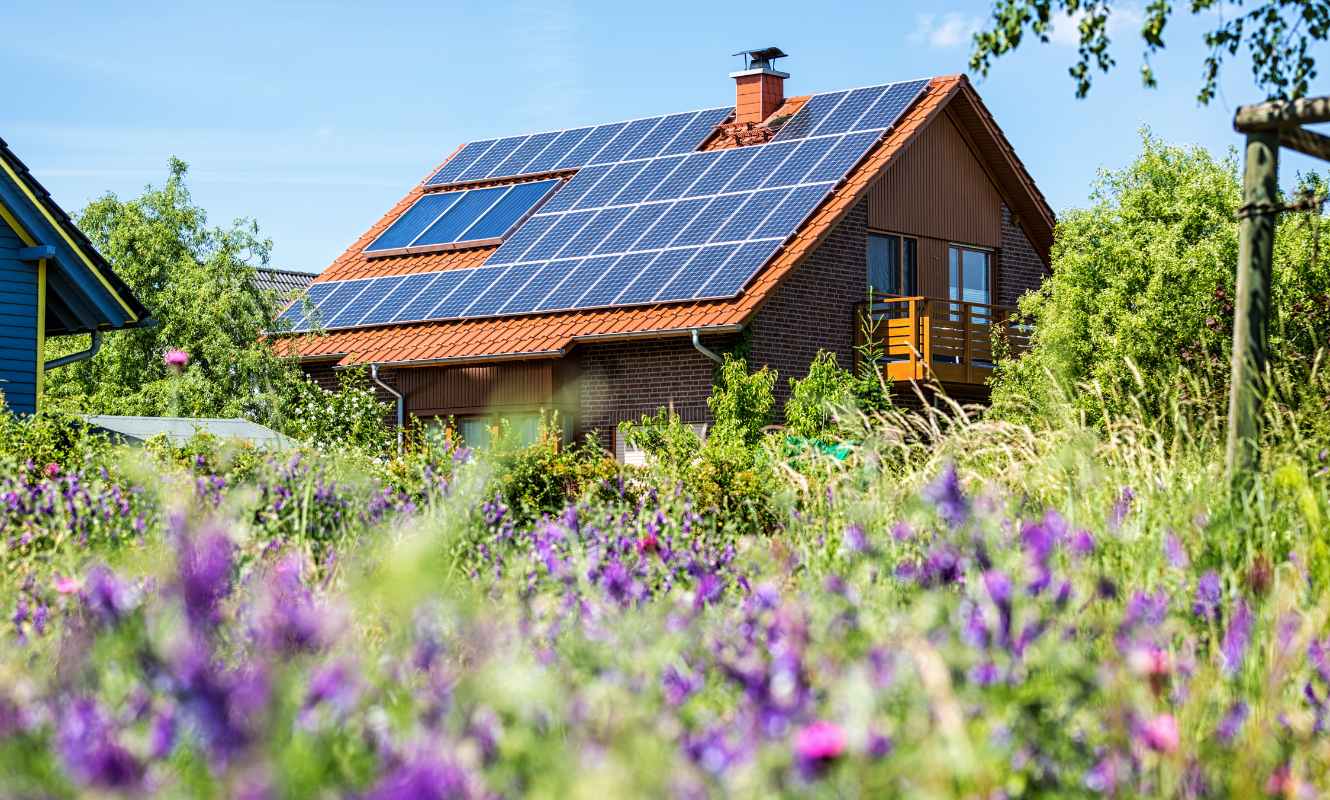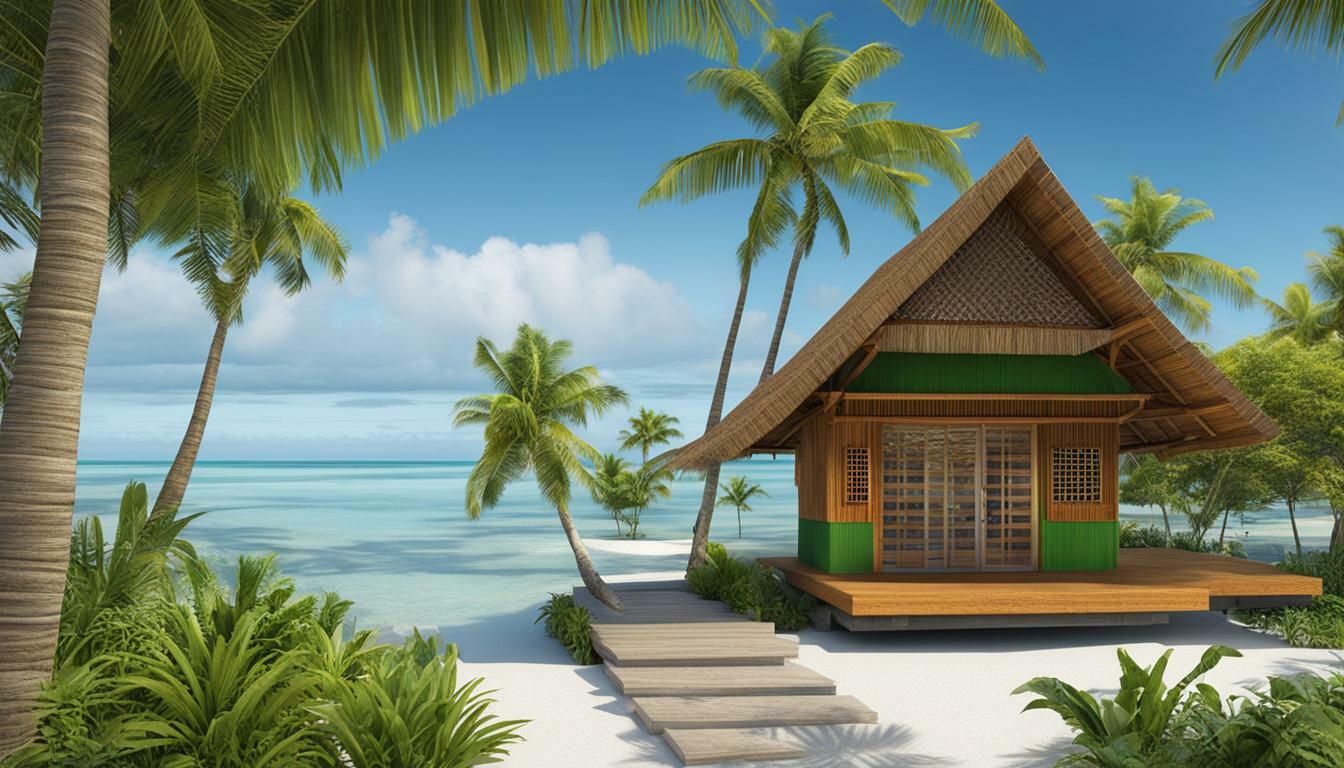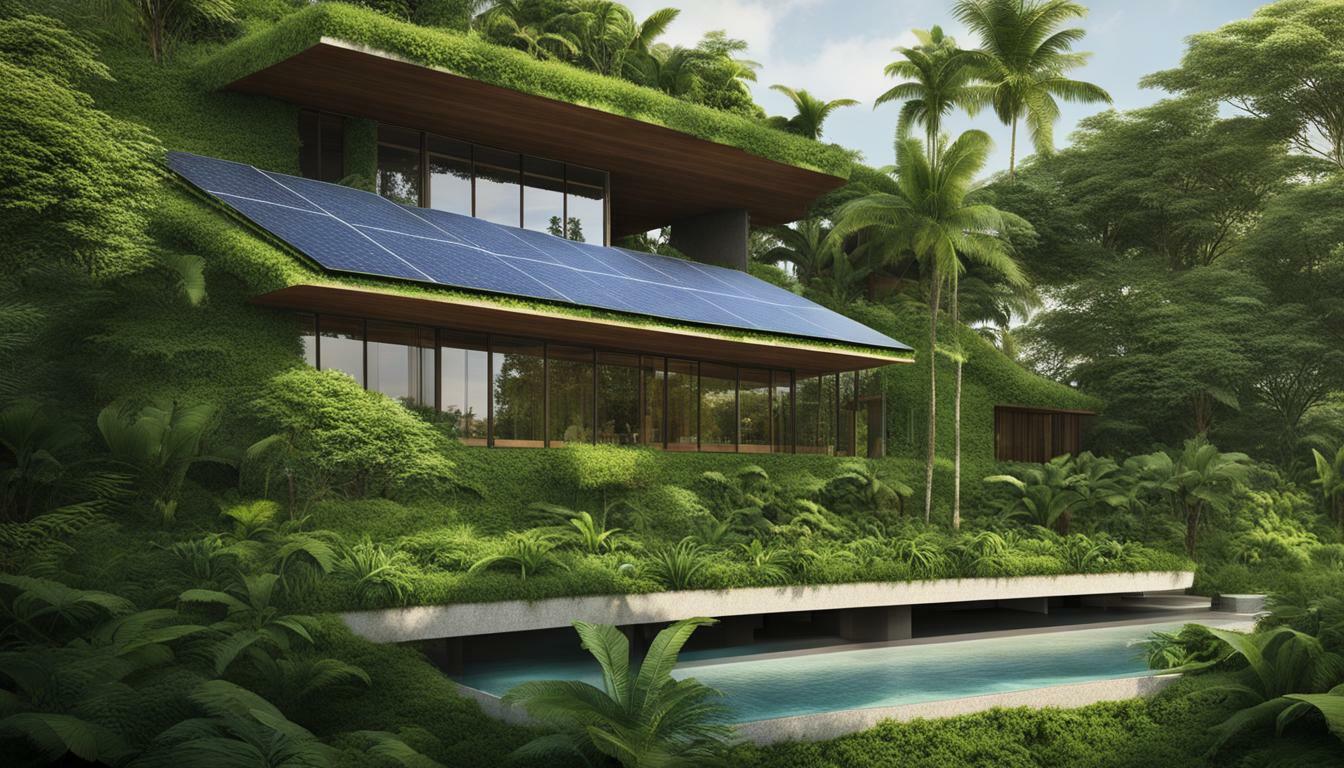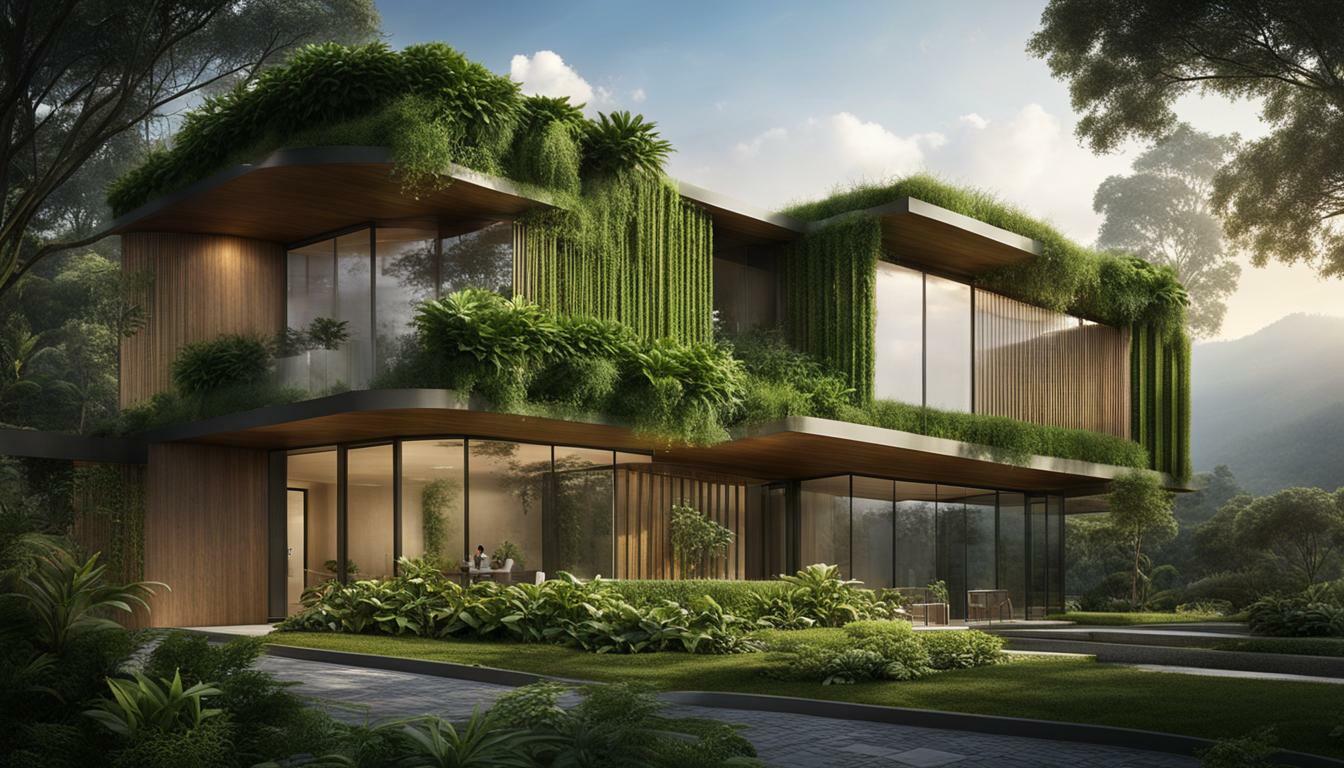France Green Building History
France has a rich history of sustainable construction practices and eco-friendly architecture, making significant advancements in green building techniques over the years. The country has been at the forefront of promoting environmentally conscious construction methods and has implemented various initiatives and regulations to support sustainable development.
Key Takeaways:
- France has established initiatives like “Le Grenelle de l’Environnement” to redefine its environmental policy, investing in clean energy and promoting renewable energy sources.
- Building labels such as THPE and THPE EnR signify energy-efficient and environmentally friendly structures.
- The Haute Qualité Environnementale (HQE) standard focuses on managing outdoor impacts, reducing energy and water use, minimizing waste, and creating pleasant indoor environments.
- France’s innovative approach to green building has inspired other countries, with similar regulations being considered in Singapore, Hong Kong, and the European Union.
Beginnings of Green Building in France
The beginnings of green building in France can be traced back to early efforts to prioritize environmental design, utilize renewable building materials, and incorporate passive design strategies for energy efficiency. As the country recognized the importance of sustainable construction practices, architects and builders started embracing eco-friendly architecture to reduce the environmental impact of buildings. These initial steps laid the foundation for France’s impressive green building history.
Environmental design became a key focus in France’s green building movement. Architects began incorporating principles such as solar orientation, natural ventilation, and daylight optimization into their designs. This approach maximizes energy efficiency by utilizing the sun’s heat and natural airflow, reducing the need for artificial heating, cooling, and lighting. Additionally, the use of renewable building materials, such as sustainably harvested wood and recycled materials, gained popularity in the construction industry.
Passive design strategies have also played a significant role in France’s green building history. These strategies involve designing buildings that take advantage of natural elements to maintain a comfortable indoor environment. Features like building orientation, insulation, and shading systems help regulate temperature and minimize the need for mechanical heating and cooling. By implementing these passive design elements, buildings in France have achieved significant energy savings while providing a pleasant and sustainable living environment.

The commitment to environmental design, utilization of renewable building materials, and incorporation of passive design strategies have paved the way for France’s success in the field of sustainable construction. These efforts have not only reduced the carbon footprint of buildings but have also contributed to the overall well-being and comfort of occupants. France’s green building history continues to inspire other countries, as they recognize the importance of adopting similar practices for a more sustainable future.
Government Initiatives and Building Labels
France’s commitment to green building was further strengthened through government initiatives, such as the introduction of building labels like THPE and THPE EnR, and a focus on sustainable urban development and green building certification. These initiatives have played a significant role in driving the adoption of sustainable construction practices and promoting eco-friendly architecture throughout the country.
The THPE (Très Haute Performance Energétique) label, which translates to “Very High Energy Performance,” recognizes buildings that demonstrate exceptional energy efficiency. To achieve this label, buildings must meet strict criteria related to energy consumption, insulation, and the use of renewable energy sources. This encourages architects and construction professionals to incorporate energy-saving features and renewable technologies into their designs.
The THPE EnR (Très Haute Performance Energétique avec des Energies Renouvelables) label takes it a step further by incorporating renewable energy requirements into the building’s energy performance criteria. This label promotes the use of renewable energy sources, such as solar panels or geothermal heating, to further reduce the environmental impact of the building.
In addition to building labels, France has also focused on sustainable urban development. This involves creating environmentally friendly communities that prioritize green spaces, pedestrian-friendly infrastructure, efficient public transportation systems, and the use of sustainable materials in construction projects.
| Building Labels | Description |
|---|---|
| THPE | Recognizes buildings with exceptional energy efficiency |
| THPE EnR | Incorporates renewable energy requirements into energy performance criteria |
France’s commitment to sustainable construction practices and green building certification has not only transformed the national building industry but has also inspired other countries to follow suit. Similar regulations and initiatives are now being considered in countries like Singapore, Hong Kong, and within the European Union, in an effort to promote sustainable development and combat climate change on a global scale.

The Haute Qualité Environnementale (HQE) standard played a pivotal role in defining sustainable architecture in France, emphasizing energy-efficient construction, waste reduction, and creating a comfortable indoor environment. Introduced in the late 1990s, this comprehensive certification system revolutionized the approach to building design and construction, promoting sustainable practices and ensuring a high level of environmental performance.
The HQE standard encompasses various criteria to evaluate and certify the environmental quality of buildings. It covers multiple aspects, including energy efficiency, water conservation, waste management, indoor air quality, and the use of environmentally friendly materials. With a focus on minimizing the building’s impact on the environment, the HQE standard encourages the adoption of renewable energy sources, efficient insulation, and the integration of sustainable technologies.
One of the key principles of the HQE standard is energy-efficient construction. The standard encourages the design and implementation of energy-saving measures, such as efficient heating and cooling systems, insulation, and the use of renewable energy sources. By prioritizing energy efficiency, buildings certified under the HQE standard significantly reduce their carbon footprint and contribute to France’s sustainability goals.

Table: Key Aspects of the Haute Qualité Environnementale (HQE) Standard
| Criterion | Description |
|---|---|
| Energy Efficiency | Promotes the use of energy-efficient technologies and renewable energy sources to reduce energy consumption. |
| Water Conservation | Encourages the implementation of water-saving measures, such as rainwater harvesting and efficient water fixtures. |
| Waste Management | Promotes waste reduction, recycling, and responsible disposal practices during the construction and operation of buildings. |
| Indoor Air Quality | Focuses on creating a healthy and comfortable indoor environment by minimizing pollutants and ensuring adequate ventilation. |
| Environmental Materials | Encourages the use of sustainable and environmentally friendly building materials throughout the construction process. |
The introduction of the HQE standard has had a profound impact on sustainable architecture in France. It has spurred innovation in building design and construction, leading to the development of energy-efficient buildings that prioritize occupant comfort and well-being. The standard has also served as a catalyst for research and development in eco-friendly materials and construction techniques, further advancing sustainable practices in the industry.
France’s commitment to the HQE standard has garnered international attention and recognition. The success of the HQE certification system has inspired other countries, such as Singapore, Hong Kong, and members of the European Union, to consider similar regulations and standards to promote sustainable construction practices. By sharing its expertise and experience, France continues to contribute to global efforts in creating a more sustainable and environmentally conscious built environment.
Impact and Inspiration
France’s pioneering efforts in sustainable construction practices and green building certification have had a significant impact, inspiring other countries like Singapore, Hong Kong, and the European Union to adopt similar regulations. The country’s commitment to promoting environmentally friendly construction techniques and sustainable urban development has set a precedent for global sustainability efforts.
One notable example of France’s influence can be seen in Singapore, where the government has initiated several green building programs. The Building and Construction Authority (BCA) has launched the Green Mark scheme, which rates buildings based on their environmental performance. This certification system encourages the use of energy-efficient technologies, sustainable materials, and environmentally friendly design principles, taking inspiration from France’s building labels such as THPE and THPE EnR.
In Hong Kong, the government has also recognized the importance of green building certification. The Hong Kong Green Building Council (HKGBC) has introduced the BEAM Plus assessment tool, which evaluates the sustainability performance of buildings. This initiative aims to reduce the environmental impacts of urban development and enhance the quality of life for residents, following in the footsteps of France’s Haute Qualité Environnementale (HQE) standard.
European Union’s Sustainability Drive
France’s green building history has not only influenced individual countries but has also driven sustainability efforts at the regional level. The European Union has been inspired by France’s success and has implemented various initiatives to promote sustainable construction practices across member states.
The European Commission introduced the European Green Deal, a comprehensive plan aimed at making Europe the world’s first climate-neutral continent by 2050. This ambitious initiative focuses on transforming the construction sector by promoting energy-efficient buildings, circular economy principles, and sustainable infrastructure, drawing inspiration from France’s commitment to green building certification and sustainable architecture.
France’s dedication to sustainable construction practices continues to shape the future of green building globally. As more countries recognize the importance of creating environmentally friendly and energy-efficient structures, France’s initiatives and regulations serve as a valuable blueprint for achieving sustainable urban development and a greener future for all.
| Key Points: |
|---|
| France’s green building history has inspired Singapore, Hong Kong, and the European Union to adopt similar regulations. |
| Singapore has introduced the Green Mark scheme, influenced by France’s building labels and emphasis on energy efficiency. |
| Hong Kong has implemented the BEAM Plus assessment tool, drawing inspiration from France’s HQE standard. |
| The European Union has launched the European Green Deal, aligning with France’s commitment to sustainable construction practices. |
Conclusion
France’s green building history stands as a testament to the nation’s commitment to sustainable construction practices, and its influence continues to inspire global efforts towards a more environmentally conscious future.
In 2007, the French government launched the “Le Grenelle de l’Environnement” initiative, which aimed to redefine the nation’s environmental policy. This ambitious plan included recommendations such as investing €1 billion in clean energy, reducing energy consumption by 20%, promoting renewable energy sources, and implementing green taxes. These measures laid the foundation for the development of green building practices in France.
Building labels like THPE (Very High Energy Performance) and THPE EnR (Very High Energy Performance and Renewable Energy) were introduced to signify structures that are energy-efficient and environmentally friendly. These labels have played a crucial role in driving the adoption of sustainable construction practices across the country, encouraging the use of renewable energy sources and the reduction of carbon emissions.
One of the most significant contributions of France to green building is the development of the Haute Qualité Environnementale (HQE) standard. This comprehensive standard focuses on managing outdoor impacts, minimizing energy and water use, reducing waste, and creating a pleasant indoor environment. It has influenced the design and construction of buildings in France, ensuring that they are not only environmentally friendly but also provide a healthy and comfortable living and working environment for occupants.
France’s innovative approach to green building has not only transformed the nation’s construction industry but also sparked a global movement towards sustainability. Similar regulations and initiatives are now being considered in countries like Singapore, Hong Kong, and the European Union, who look to France as a model for implementing sustainable practices in their own construction sectors. By sharing its knowledge and experiences, France continues to inspire and drive the global efforts towards a greener and more sustainable future.
FAQ
What is the history of green building in France?
France has made significant progress in green building and sustainable construction practices. In 2007, the French government established the “Le Grenelle de l’Environnement” initiative, which aimed to redefine France’s environmental policy. Recommendations included investing €1 billion in clean energy, reducing energy consumption by 20%, promoting renewable energy sources, and implementing green taxes.
What building labels were introduced in France to signify energy-efficient and environmentally friendly structures?
Building labels such as THPE and THPE EnR were introduced in France to signify energy-efficient and environmentally friendly structures.
What is the Haute Qualité Environnementale (HQE) standard in France?
The Haute Qualité Environnementale (HQE) standard in France focuses on managing outdoor impacts, minimizing energy and water use, reducing waste, and creating a pleasant indoor environment.
How has France’s green building history inspired other countries?
France’s innovative approach to green building is expected to inspire other countries, with similar regulations being considered in Singapore, Hong Kong, and the European Union.







